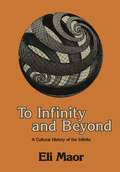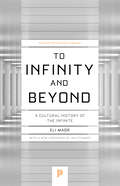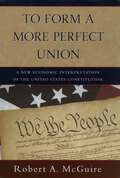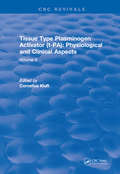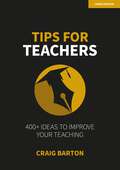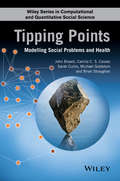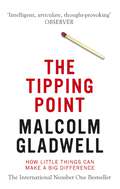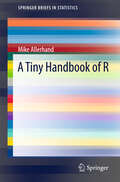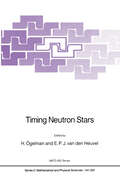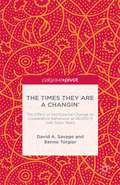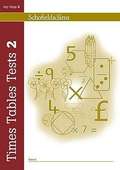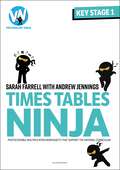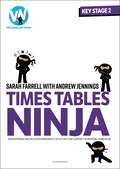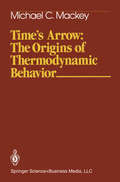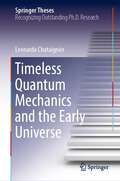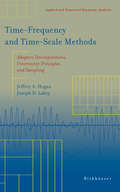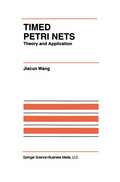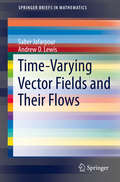- Table View
- List View
To Infinity and Beyond: A Cultural History of the Infinite
by Eli MaorThe infinite! No other question has ever moved so profoundly the spirit of man; no other idea has so fruitfully stimulated his intellect; yet no other concept stands in greater need of clarification than that of the infinite. . . - David Hilbert (1862-1943) Infinity is a fathomless gulf, There is a story attributed to David Hilbert, the preeminent mathe into which all things matician whose quotation appears above. A man walked into a vanish. hotel late one night and asked for a room. "Sorry, we don't have o Marcus Aurelius (121- 180), Roman Emperor any more vacancies," replied the owner, "but let's see, perhaps and philosopher I can find you a room after alL" Leaving his desk, the owner reluctantly awakened his guests and asked them to change their rooms: the occupant of room #1 would move to room #2, the occupant of room #2 would move to room #3, and so on until each occupant had moved one room over. To the utter astonish ment of our latecomer, room #1 suddenly became vacated, and he happily moved in and settled down for the night. But a numbing thought kept him from sleep: How could it be that by merely moving the occupants from one room to another, the first room had become vacated? (Remember, all of the rooms were occupied when he arrived.
To Infinity and Beyond: A Cultural History of the Infinite - New Edition (Princeton Science Library #54)
by Eli MaorTo Infinity and Beyond explores the idea of infinity in mathematics and art. Eli Maor examines the role of infinity, as well as its cultural impact on the arts and sciences. He evokes the profound intellectual impact the infinite has exercised on the human mind--from the "horror infiniti" of the Greeks to the works of M. C. Escher; from the ornamental designs of the Moslems, to the sage Giordano Bruno, whose belief in an infinite universe led to his death at the hands of the Inquisition. But above all, the book describes the mathematician's fascination with infinity--a fascination mingled with puzzlement.
To Form A More Perfect Union: A New Economic Interpretation of the United States Constitution
by Robert A. McGuireMany important questions regarding the creation and adoption of the United States Constitution remain unresolved. Did slaveholdings or financial holdings significantly influence our Founding Fathers' stance on particular clauses or rules contained in the Constitution? Was there a division of support for the Constitution related to religious beliefs or ethnicity? Were founders from less commercial areas more likely to oppose the Constitution? To Form a More Perfect Union successfully answers these questions and offers an economic explanation for the behavior of our Founding Fathers during the nation's constitutional founding. In 1913, American historian Charles A. Beard controversially argued in his book An Economic Interpretation of the Constitution of the United States that the framers and ratifiers of the Constitution were less interested in furthering democratic principles than in advancing specific economic and financial interests. Beard's thesis eventually emerged as the standard historical interpretation and remained so until the 1950s. Since then, many constitutional and historical scholars have questioned an economic interpretation of the Constitution as being too narrow or too calculating, believing the great principles and political philosophies that motivated the Founding Fathers to be worthier subjects of study. In this meticulously researched reexamination of the drafting and ratification of our nation's Constitution, Robert McGuire argues that Alexander Hamilton, James Madison, George Mason and the other Founding Fathers did act as much for economic motives as for abstract ideals. To Form a More Perfect Union offers compelling evidence showing that the economic, financial, and other interests of the founders can account for the specific design and adoption of our Constitution. This is the first book to provide modern evidence that substantiates many of the overall conclusions found in Charles Beard's An Economic Interpretation while challenging and overturning other of Beard's specific findings. To Form a More Perfect Union presents an entirely new approach to the study of the shaping of the U.S. Constitution. Through the application of economic thinking and rigorous statistical techniques, as well as the processing of vast amounts of data on the economic interests and personal characteristics of the Founding Fathers, McGuire convincingly demonstrates that an economic interpretation of the Constitution is valid. Radically challenging the prevailing views of most historians, political scientists, and legal scholars, To Form a More Perfect Union provides a wealth of new findings about the Founding Fathers' constitutional choices and sheds new light on the motivations behind the design and adoption of the United States Constitution.
Tissue Type Plasminogen Activity: Volume II
by Cornelius KluftThis book is made possible by the enthusiastic contributions of the authors of the chapters. They have been invited from young and active scientists in the field of t-PA research. I am grateful for their contribution and for the fact that all accepted the specifications of their chapter in order to obtain a structured book. Inevitably, some overlap does exist; on the one hand to enable controversial or unsettled areas to be discussed by the different experts with a different approach and background.It is a particular pleasure and honor that Dr. T. Astrup, as an eye-witness and essential contributor to the history of t-PA discovery and research, gives a unique account of the history of t-PA research in the first chapter of the book.
Tissue Type Plasminogen Activity: Volume II
by Cornelius KluftThis book is made possible by the enthusiastic contributions of the authors of the chapters. They have been invited from young and active scientists in the field of t-PA research. I am grateful for their contribution and for the fact that all accepted the specifications of their chapter in order to obtain a structured book. Inevitably, some overlap does exist; on the one hand to enable controversial or unsettled areas to be discussed by the different experts with a different approach and background.It is a particular pleasure and honor that Dr. T. Astrup, as an eye-witness and essential contributor to the history of t-PA discovery and research, gives a unique account of the history of t-PA research in the first chapter of the book.
Tissue Functioning and Remodeling in the Circulatory and Ventilatory Systems (Biomathematical and Biomechanical Modeling of the Circulatory and Ventilatory Systems #5)
by Marc ThirietThe volumes in this authoritative series present a multidisciplinary approach to modeling and simulation of flows in the cardiovascular and ventilatory systems, especially multiscale modeling and coupled simulations. Volume 5 is devoted to cells, tissues, and organs of the cardiovascular and ventilatory systems with an emphasis on mechanotransduction-based regulation of flow. The blood vessel wall is a living tissue that quickly reacts to loads applied on it by the flowing blood. In any segment of a blood vessel, the endothelial and smooth muscle cells can sense unusual time variations in small-magnitude wall shear stress and large-amplitude wall stretch generated by abnormal hemodynamic stresses. These cells respond with a short-time scale (from seconds to hours) to adapt the vessel caliber. Since such adaptive cell activities can be described using mathematical models, a key objective of this volume is to identify the mesoscopic agents and nanoscopic mediators required to derive adequate mathematical models. The resulting biomathematical models and corresponding simulation software can be incorporated into platforms developed in virtual physiology for improved understanding and training.
Tips for Teachers: 400+ ideas to improve your teaching
by Craig BartonTeaching is complex. But there are simple ideas we can enact to help our teaching be more effective. This book contains over 400 such ideas.The ideas come from two sources. First, from the wonderful guests on my Tips for Teachers podcast - education heavyweights such as Dylan Wiliam, Daisy Christodoulou and Tom Sherrington, as well as talented teachers who are not household names but have so much wisdom to share. Then there's what I have learned from working with amazing teachers and students in hundreds of schools around the world.Inside you will find 22 ideas to enhance mini-whiteboard use, 15 ideas to improve the start of your lesson, 14 ideas to help make Silent Teacher effective, seven ways to respond if a student says they don't know, and lots, lots more.Each idea can be implemented the very next time you step into a classroom. So, whatever your level of experience, subject or phase, there are plenty of ideas in this book to help take your teaching to the next level.
Tipping Points: Modelling Social Problems and Health (Wiley Series in Computational and Quantitative Social Science)
by John Bissell Camila Caiado Sarah Curtis Michael Goldstein Brian StraughanThis book focuses on the modelling of contemporary health and social problems, especially those considered a major burden to communities, governments and taxpayers, such as smoking, alcoholism, drug use, and heart disease. Based on a series of papers presented at a recent conference hosted by the Leverhulme-funded Tipping Points project at the University of Durham, this book illustrates a broad range of modelling approaches. Such a diverse collection demonstrates that an interdisciplinary approach is essential to modelling tipping points in health and social problems, and the assessment of associated risk and resilience.
Tipping Points: Modelling Social Problems and Health (Wiley Series in Computational and Quantitative Social Science)
by Brian Straughan John Bissell Camila Caiado Michael Goldstein Sarah CurtisThis book focuses on the modelling of contemporary health and social problems, especially those considered a major burden to communities, governments and taxpayers, such as smoking, alcoholism, drug use, and heart disease. Based on a series of papers presented at a recent conference hosted by the Leverhulme-funded Tipping Points project at the University of Durham, this book illustrates a broad range of modelling approaches. Such a diverse collection demonstrates that an interdisciplinary approach is essential to modelling tipping points in health and social problems, and the assessment of associated risk and resilience.
The Tipping Point: How Little Things Can Make a Big Difference
by Malcolm Gladwell'A wonderful page-turner about a fascinating idea that should affect the way every thinking person thinks about the world around him' Michael LewisIn this brilliant and original book, Malcolm Gladwell explains and analyses the 'tipping point', that magic moment when ideas, trends and social behaviour cross a threshold, tip and spread like wildfire. Taking a look behind the surface of many familiar occurrences in our everyday world, Gladwell explains the fascinating social dynamics that cause rapid change.'Hip and hopeful, THE TIPPING POINT is like the idea it describes: concise, elegant but packed with social power. A book for anyone who cares about how society works and how we can make it better' George Stephanopoulos
A Tiny Handbook of R (SpringerBriefs in Statistics)
by Mike AllerhandThis Brief provides a roadmap for the R language and programming environment with signposts to further resources and documentation.
Timing Neutron Stars (Nato Science Series C: #262)
by H. Ögelman E. P. Van Den HeuvelThe idea for organizing an Advanced Study Institute devoted largely to neutron star timing arose independently in three places, at Istanbul, Garching and Amster dam; when we became aware of each other's ideas we decided to join forces. The choice of a place for the Institute, in Turkey, appealed much to us all, and it was then quickly decided that Qe§me would be an excellent spot. When the preparations for the Institute started, early in 1987, we could not have guessed how timely the subject actually was. Of course, the recently dis covered QPO phenomena in accreting neutron stars and half a dozen binary and millisecond radio pulsars known at the time formed one of the basic motivations for organizing this Institute. But none of us could have guessed that later in 1987 we were to witness the wonderful discovery of the binary and millisecond radio pulsars in globular clusters and, -as if Nature wished to give us a special present for this the discovery in March 1988 of a millisecond pulsar in an eclipsing binary Institu- system, the first eclipsing radio pulsar ever found, and the second fastest in the sky! The discussion of this pulsar, its formation and fate was one of the highlights of this meeting, especially since its discoverers were among the participants of the Institute and could provide us with first-hand information.
The Times They Are A Changin': The Effect of Institutional Change on Cooperative Behaviour at 26,000ft over Sixty Years
by D. Savage B. TorglerThis narrative and empirical analysis investigates Hilary's claim that in his day they would not have left a man behind to die. The authors examine over 60 years of Himalayan climbing data and stories in order to test the changes in cooperation in this extreme life and death environment.
Times tables (UEB uncontracted)
by RnibThese pages show times table grids. It is a multi-page image set on two pages. There is a locator dot shown on each page, which will be at the top left when the image is the correct way up. Times tables The first column is the first multiplier from 1 to 10. The first row is the second multiplier from 1 to 10. Where a row and column meet is the result of the multiplication of the multipliers. For example four in the first column and three in the first row “ go right from the four and down from the three, they meet at twelve which is four times three. Times tables to be learnt This image shows the same grid of numbers as page one but simplified. The easy 2, 5 and 10 tables have been removed. Duplicates are also removed (3 x 4 is the same as 4 x 3). This leaves the fifteen multiplications to be learnt.
Times tables (UEB contracted)
by RnibThese pages show times table grids. It is a multi-page image set on two pages. There is a locator dot shown on each page, which will be at the top left when the image is the correct way up. Times tables The first column is the first multiplier from 1 to 10. The first row is the second multiplier from 1 to 10. Where a row and column meet is the result of the multiplication of the multipliers. For example four in the first column and three in the first row “ go right from the four and down from the three, they meet at twelve which is four times three. Times tables to be learnt This image shows the same grid of numbers as page one but simplified. The easy 2, 5 and 10 tables have been removed. Duplicates are also removed (3 x 4 is the same as 4 x 3). This leaves the fifteen multiplications to be learnt.
Times Tables Tests Up To 12x12: Multiplication Tables Check (PDF)
by Samantha Townsend100 tests to assess fluency and recall of all times tables up to and including 12x12. Get ready for the new multiplication tables check for Year 4 from 2020. Quick tests include variation, problem solving and word problems in context for greater depth and challenge. 30 tests for Year 2; 30 tests for Year 3; and 40 tests for Year 4 all in one book. Times tables are revisited as you progress through the tests. Practise against the clock to improve speed and accuracy with timing suggestions. Photocopy, edit and download. Use in class or set for homework.
Times Tables Tests 2 (PDF)
by Hilary KollTimes Tables Tests provides regular and structured times tables practice, helping children to strengthen their understanding of essential multiplication and division facts. Times Tables Tests 2 covers times tables up to and including 13 x 13 and is suitable for children in Years 4, 5 and 6.
Times Tables Ninja for KS1: Photocopiable multiplication worksheets that support the National Curriculum
by Sarah FarrellThe essential book of times tables activities for the KS1 classroom, perfect for preparing primary pupils to master times tables like a ninja! From Sarah Farrell with Andrew Jennings, the same expert team behind Times Tables Ninja for KS2.The activities in this photocopiable book give Key Stage 1 pupils all the skills needed to gain confidence and fluency in multiplication and division in their 2, 3, 4, 5 and 10 times tables. Times Tables Ninja for KS1 goes above and beyond the National Curriculum to provide a solid foundation ahead of the multiplication tables check in Year 4.Each chapter includes a variety of exercises to promote rapid recall which has been proven to be more effective than learning by rote for early success in maths. The book establishes confidence in one times table at a time, then includes activities to establish that knowledge in the primary maths curriculum to turn all pupils into multiplication Grand Masters!Written by experienced teacher Sarah Farrell (@SarahFarrellKS2) and edited by Andrew Jennings (@VocabularyNinja), this is the ultimate classroom resource for reinforcing times tables and preparing pupils for progression to KS2 maths and beyond.For more must-have Ninja books by Andrew Jennings (@VocabularyNinja), check out Vocabulary Ninja, Arithmetic Ninja, Write Like a Ninja and Comprehension Ninja.
Times Tables Ninja
by Sarah FarrellThe essential book of times tables activities for the primary classroom, perfect for turning all pupils into Grand Masters of Times Tables! From teacher Sarah Farrell and Andrew Jennings, the creator of the bestselling Vocabulary Ninja and Write Like a Ninja.The activities in this photocopiable book gives Key Stage 2 pupils all the tools they need to gain fluency in multiplication and division up to their 12 times tables. Each chapter begins with exercises for practising rapid recall, followed by visually engaging activities for applying knowledge to other areas of maths including shape, perimeter, scale factors, fractions and more.Fully aligned to the primary National Curriculum for maths, Times Tables Ninja features an introduction for teachers explaining the Concrete Pictorial Abstract (CPA) approach and the vocabulary to use when teaching times tables. There are certificates at the end of each section to support progression and encourage children to reach the next Ninja level.Written by experienced teacher Sarah Farrell (@SarahFarrellKS2) and edited by Andrew Jennings (@VocabularyNinja), this is the ultimate classroom resource for reinforcing times tables and preparing pupils for SATS and the statutory multiplication tables check.
Times tables (large print)
by RnibThese pages show times table grids. It is a multi-page image set on two pages. There is a locator dot shown on each page, which will be at the top left when the image is the correct way up. Times tables The first column is the first multiplier from 1 to 10. The first row is the second multiplier from 1 to 10. Where a row and column meet is the result of the multiplication of the multipliers. For example four in the first column and three in the first row “ go right from the four and down from the three, they meet at twelve which is four times three. Times tables to be learnt This image shows the same grid of numbers as page one but simplified. The easy 2, 5 and 10 tables have been removed. Duplicates are also removed (3 x 4 is the same as 4 x 3). This leaves the fifteen multiplications to be learnt.
Time’s Arrow: The Origins of Thermodynamic Behavior (Springer Study Edition)
by Michael C. MackeyThe Second Law of Thermodynamics has been called the most important law of nature: It is the law that gives a direction to processes that is not inherent in the laws of motion, that says the state of the universe is driven to thermal equilibrium. Its mathematical formulation is simple: The entropy of a closed system cannot decrease. Since the recognition that macroscopic phenomena have an atomic basis, it has remained a fundamental problem to reconcile the increase of entropy with the known reversibility of all the laws of microscopic physics. Professor Michael Mackey of McGill University here explores the dynamical basis for the Second Law, that is, he seeks to illuminate the fundamental dynamical properties required for the construction of a successful statistical mechanics. Aimed at physicists and applied mathematicians with an interest in the foundations of statistical mechanics, the book includes such new material as: a demonstration that the black body radiation law can be deduced from maximal entropy principles; a discussion of sufficient conditions for the existence of at least one state of thermodynamic equilibrium; a description of the behavior of entropy in asymptotically periodic systems; a necessary and sufficient condition for the evolution of entropy to a global maximum; and a presen- tation of the three main types of ergodic theorems and their proofs. He also explores the potential role of incomplete knowledge of dynamical variables, measurement imprecision, and the effects of noise in giving rise to entropy increases.
Timeless Quantum Mechanics and the Early Universe (Springer Theses)
by Leonardo ChataignierThe book is based on the author's PhD thesis, which deals with the concept of time in quantum gravity and its relevance for the physics of the early Universe. It presents a consistent and complete new relational formulation of quantum gravity (more specifically, of quantum mechanics models with diffeomorphism invariance), which is applied to potentially observable cosmological effects. The work provides answers to the following questions: How can the dynamics of quantum states of matter and geometry be defined in a diffeomorphism-invariant way? What is the relevant space of physical states and which operators act on it? How are the quantum states related to probabilities in the absence of a preferred time? The answers can provide a further part of the route to constructing a fundamental theory of quantum gravity. The book is well-suited to graduate students as well as professional researchers in the fields of general relativity and gravitation, cosmology, and quantum foundations.
Time‒Frequency and Time‒Scale Methods: Adaptive Decompositions, Uncertainty Principles, and Sampling (Applied and Numerical Harmonic Analysis)
by Jeffrey A. HoganDeveloped in this book are several deep connections between time-frequency (Fourier/Gabor) analysis and time-scale (wavelet) analysis, emphasizing the powerful adaptive methods that emerge when separate techniques from each area are properly assembled in a larger context. While researchers at the forefront of these areas are well aware of the benefits of such a unified approach, there remains a knowledge gap in the larger community of practitioners about the precise strengths and limitations of Fourier/Gabor analysis versus wavelets. This book fills that gap by presenting the interface of time-frequency and time-scale methods as a rich area of work. "Foundations of Time-Frequency and Time-Scale Methods" will be suitable for applied mathematicians and engineers in signal/image processing and communication theory, as well as researchers and students in mathematical analysis, signal analysis, and mathematical physics.
Timed Petri Nets: Theory and Application (The International Series on Discrete Event Dynamic Systems #9)
by Jiacun WangDriven by the request for increased productivity, flexibility, and competitiveness, modern civilization increasingly has created high-performance discrete event dynamic systems (DEDSs). These systems exhibit concurrent, sequential, competitive activities among their components. They are often complex and large in scale, and necessarily flexible and thus highly capital-intensive. Examples of systems are manufacturing systems, communication networks, traffic and logistic systems, and military command and control systems. Modeling and performance evaluation play a vital role in the design and operation of such high-performance DEDSs and thus have received widespread attention from researchers over the past two decades. One methodology resulting from this effort is based on timed Petri nets and related graphical and mathematical tools. The popularity that Petri nets have been gaining in modeling of DEDSs is due to their powerful representational ability of concurrency and synchronization; however these properties of DEDSs cannot be expressed easily in traditional formalisms developed for analysis of `classical' systems with sequential behaviors. This book introduces the theories and applications of timed Petri nets systematically. Moreover, it also presents many practical applications in addition to theoretical developments, together with the latest research results and industrial applications of timed Petri nets. Timed Petri Nets: Theory and Application is intended for use by researchers and practitioners in the area of Discrete Event Dynamic Systems.
Time-Varying Vector Fields and Their Flows (SpringerBriefs in Mathematics)
by Saber Jafarpour Andrew D. LewisThis short book provides a comprehensive and unified treatment of time-varying vector fields under a variety of regularity hypotheses, namely finitely differentiable, Lipschitz, smooth, holomorphic, and real analytic. The presentation of this material in the real analytic setting is new, as is the manner in which the various hypotheses are unified using functional analysis. Indeed, a major contribution of the book is the coherent development of locally convex topologies for the space of real analytic sections of a vector bundle, and the development of this in a manner that relates easily to classically known topologies in, for example, the finitely differentiable and smooth cases. The tools used in this development will be of use to researchers in the area of geometric functional analysis.
